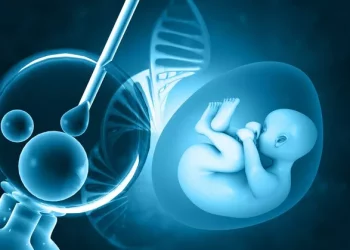Understanding the timing of ovulation is crucial for couples trying to conceive. Ovulation is the phase in the menstrual cycle when an egg is released from the ovary, making it the optimal time for fertilization to occur. This article will provide a comprehensive overview of ovulation timing, its relationship with the menstrual cycle, the biological signs that indicate ovulation, and how to calculate and predict your most fertile days. Additionally, we will explore factors that can influence ovulation timing and offer practical tips for tracking and enhancing fertility.
The Menstrual Cycle: An Overview
To understand when ovulation occurs, it is essential to grasp the phases of the menstrual cycle:
1. Menstrual Phase: This phase marks the beginning of the cycle and involves the shedding of the uterine lining, which results in menstrual bleeding. It typically lasts between 3 to 7 days.
2. Follicular Phase: This phase overlaps with the menstrual phase, starting on the first day of menstruation and lasting until ovulation. During this time, the pituitary gland secretes follicle-stimulating hormone (FSH), which stimulates the growth of ovarian follicles. Each follicle contains an egg, but usually, only one follicle reaches maturity.
3. Ovulation: Ovulation occurs mid-cycle and is the release of a mature egg from the dominant follicle. This process is triggered by a surge in luteinizing hormone (LH). The egg then travels down the fallopian tube, where it can be fertilized by sperm.
4. Luteal Phase: This phase begins after ovulation and lasts until the start of the next menstrual period. The ruptured follicle transforms into the corpus luteum, which secretes progesterone to maintain the uterine lining for a potential pregnancy. If fertilization does not occur, progesterone levels drop, leading to menstruation.
When Does Ovulation Occur?
Ovulation typically occurs around the midpoint of the menstrual cycle. For a woman with a 28-day cycle, ovulation usually happens around day 14. However, cycle lengths can vary significantly among women and even from month to month for the same woman. Here’s a more detailed look at how ovulation timing corresponds with cycle length:
28-Day Cycle: Ovulation around day 14
21-Day Cycle: Ovulation around day 7
35-Day Cycle: Ovulation around day 21
It is important to note that the luteal phase (the period after ovulation) is relatively constant, lasting about 14 days. Therefore, ovulation occurs approximately 14 days before the start of the next period, regardless of the overall cycle length.
See also: Can Low Body Fat Cause Infertility: Things You Need To Know
Biological Signs of Ovulation
Several physiological signs and symptoms can help indicate when ovulation is approaching or occurring:
1. Basal Body Temperature (BBT): Basal body temperature is the body’s lowest resting temperature, measured first thing in the morning. Before ovulation, BBT is relatively low. After ovulation, due to the hormone progesterone, BBT rises slightly (about 0.5 to 1 degree Fahrenheit). Tracking BBT over several cycles can help identify patterns and predict ovulation.
2. Cervical Mucus: The consistency and quantity of cervical mucus change throughout the menstrual cycle. During the fertile window, cervical mucus becomes clear, stretchy, and slippery, similar to egg whites. This change facilitates the movement of sperm through the cervix.
3. LH Surge: Ovulation predictor kits (OPKs) detect the surge in luteinizing hormone that occurs 24 to 36 hours before ovulation. A positive OPK indicates that ovulation is imminent.
4. Physical Symptoms: Some women experience mittelschmerz, a mild pain or cramping on one side of the lower abdomen during ovulation. Other possible symptoms include increased libido, breast tenderness, and a heightened sense of smell.
Calculating and Predicting Ovulation
Accurately predicting ovulation involves tracking menstrual cycles and recognizing ovulation signs. Here are some methods to calculate and predict ovulation:
1. Calendar Method: Track your menstrual cycle for several months to identify its average length. Subtract 14 days from the length of your cycle to estimate your ovulation day. For example, if your cycle is 30 days long, ovulation likely occurs around day 16.
2. Basal Body Temperature Charting: Measure and record your BBT daily upon waking. Look for a consistent temperature rise that persists for at least three days, indicating that ovulation has occurred.
3. Ovulation Predictor Kits (OPKs): Use OPKs to test your urine for the LH surge. Follow the instructions provided with the kit, typically starting to test a few days before you expect to ovulate based on your cycle length.
4. Fertility Apps and Tools: Numerous apps can help track your cycle and predict ovulation based on your input data. These apps often incorporate BBT, cervical mucus observations, and OPK results for a comprehensive fertility analysis.
Factors Influencing Ovulation Timing
Several factors can affect the timing of ovulation and overall menstrual cycle regularity:
1. Stress: High levels of physical or emotional stress can disrupt hormonal balance and delay ovulation.
2. Body Weight: Both underweight and overweight can impact hormone levels and interfere with regular ovulation. Maintaining a healthy weight is important for reproductive health.
3. Exercise: While moderate exercise supports overall health, excessive physical activity can affect menstrual regularity and ovulation.
4. Medical Conditions: Conditions such as polycystic ovary syndrome (PCOS), thyroid disorders, and other endocrine abnormalities can disrupt ovulation.
5. Age: Fertility declines with age, particularly after 35. As women age, the regularity and frequency of ovulation may decrease.
Tips for Enhancing Fertility
Enhancing fertility involves both understanding and optimizing the timing of intercourse as well as maintaining overall reproductive health:
1. Timing Intercourse: The best time to have intercourse for conception is during the fertile window, which includes the five days leading up to ovulation and the day of ovulation itself. Having sex every day or every other day during this period maximizes the chances of sperm meeting the egg.
2. Healthy Diet: A balanced diet rich in essential nutrients supports reproductive health. Key nutrients include folic acid, iron, zinc, and vitamins C and D.
3. Prenatal Vitamins: Taking prenatal vitamins before conception can ensure that your body has adequate levels of necessary nutrients, especially folic acid, which is important for preventing neural tube defects.
4. Lifestyle Choices: Avoid smoking, limit alcohol consumption, and reduce caffeine intake. These substances can negatively impact fertility.
5. Stress Management: Practice stress-reducing techniques such as yoga, meditation, or mindfulness to help maintain hormonal balance and improve overall well-being.
See also: Smoking and Female Infertility: A Complete Overview
When to Seek Medical Consultation
If you have been trying to conceive without success, it might be time to consult a healthcare provider:
1. Irregular Cycles: If your menstrual cycles are consistently irregular or absent, seek medical advice to diagnose and address potential underlying issues.
2. Duration of Trying: Women under 35 who have been trying to conceive for one year, or women over 35 who have been trying for six months, should seek medical evaluation.
3. Pre-existing Health Conditions: If you have conditions like PCOS, endometriosis, or thyroid disorders, a specialist can provide targeted treatment to enhance fertility.
Techniques and Tools for Fertility Tracking
Utilizing various tools and techniques can aid in predicting ovulation and identifying the most fertile days:
1. Ovulation Calculators: These online tools estimate the fertile window based on your cycle length. While not precise, they offer a good starting point for tracking fertility.
2. Fertility Tracking Apps: These apps allow you to record cycle details, BBT, cervical mucus observations, and OPK results, providing personalized predictions and insights.
3. Manual Charting: Keeping a written record of menstrual cycle details and ovulation signs can help you understand your fertility patterns over time.
Debunking Common Myths
There are many myths surrounding conception and ovulation timing. Here are a few misconceptions:
1. Myth: Conception is Only Possible on Ovulation Day: While ovulation day is crucial, sperm can survive in the reproductive tract for up to six days. Therefore, having intercourse in the days leading up to ovulation is also important.
2. Myth: Ovulation Always Occurs on Day 14: Ovulation varies among women and cycles. Regular tracking and personalized monitoring are necessary to determine the most accurate timing.
3. Myth: Stress Does Not Affect Fertility: Stress can significantly impact hormonal balance and ovulation. Managing stress through healthy lifestyle choices is important for maintaining fertility.
4. Myth: Age Doesn’t Affect Fertility Until 40: Fertility begins to decline in the late 20s to early 30s, with a more pronounced drop after 35. Early planning and consultation can be beneficial.
Conclusion
Understanding the timing of ovulation is critical for couples trying to conceive. By comprehending the phases of the menstrual cycle, recognizing the signs of ovulation, and accurately predicting the fertile window, couples can optimize their chances of conception. Regular cycles, good health, and informed lifestyle choices all contribute to fertility.
Utilizing tools like ovulation predictors, fertility tracking apps, and manual charting can provide valuable insights into fertility patterns. When combined with evidence-based practices and debunking common myths, couples can enhance their chances of achieving a healthy pregnancy. Remember, patience and persistence are key, and seeking support from healthcare professionals can offer guidance and reassurance throughout the journey towards conception.
Related Topics:
Surgical Abortion and Its Impact on Fertility: A Full Guide
Does Diabetes Affect Fertility in Females: Things You Need To Know
A Complete Overview: Can Being Underweight Cause Infertility?



























